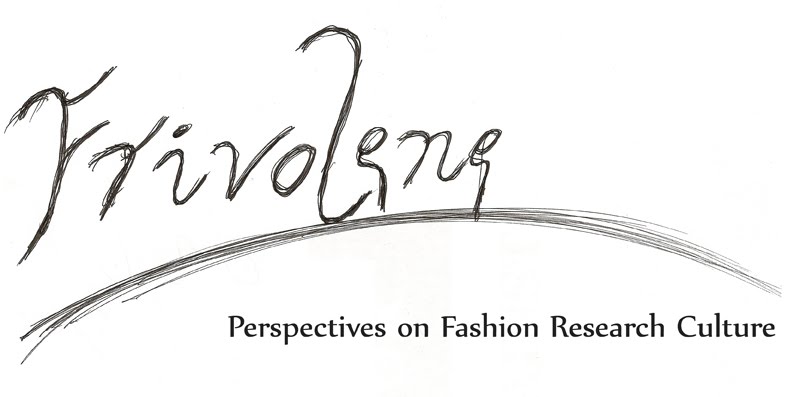
As far as possible at the moment I am trying to make the best use of the books and materials I already have in my own ''library'', and also from those other free resources, such as the websites of newspapers and magazines (though the UK Times and Sunday Times websites are now subscription based, so I guess I'll be researching elsewhere from now on). Yet sometimes there are some books you just have to have your own copy of, as waiting for the library to get them in takes too long (besides, I tend to make a lot of pencil notations in my own books, something librarians tend to frown upon!). Aside from Magaret Maynard's book Out of Line: Australian Women and Style, published in 2001, there are very few publications on the Australian fashion scene, which is one of my potential case studies in my research into the Fashion City. So it was with great excitement that I came across this new publication from Thames & Hudson called Fashion: Australian and New Zealand Designers, by Mitchell Oakley Smith, an associate Editor at GQ Australia. While the book will probably not win any awards for its rather unimaginative title, the contents promise a good overview of Australian and New Zealand fashion designers who have emerged over the last two decades. The book covers some, now internationally well-known, stalwarts of the OZ/NZ fashion industry, profiling Akira, Alica McCall, Collette Dinnigan, Easton Person, Karen Walker, Nom*D, Zambesi, Willow and Sass & Bide. Lesser known names, at least to those of us in the Northern hemisphere, include Arnsdorf, Birthday Suit, Camilla and Marc, Dhini, Flamingo Sands, Lisa Ho, Pistols At Dawn, Something Else and Vanishing Elephant. Overall this book offers a visual treatise of the work of the profiled designers, together with a brief insight into their backgrounds and positioning within the Australian-New Zealand fashion scene. Similar to much of the world today, this particular fashion scene offers up a melting-pot of styles and influences, imbibed with a hard-working ethic on the part of the designers. As Oakley Smith states in his introduction:
The breakdown of the barrier that once existed between the secular fashion industry and the general public has been seen as the democratisation of fashion. Not detrimental to its growth or prestige, local fashion has gained attention, interest and, ultimately, respect of its public.
(Oakley Smith, 2010: pp xi)
It is interesting to note, however, that whatever recognition designers gain in their ''home-market'', it still remains necessary to for their reputations to be secured and confirmed outside of that of ''home market'', with catwalk shows and press coverage in the so-called ''first-tier'' Fashion Cities, such as Paris, London Milan and New York. This is something not limited to Australian and New Zealand designers, as even those based here in London have often not been recognised as leading talents in their field, in part because fashion is deemed ''too frivolous'', or because many British designers, particularly at the higher-end of the market, make the bulk of their income from exporting their work abroad.

The second book to enter my possession recently is the first look at the work of Alexander McQueen, subtitled Genius of a Generation, by Kristin Knox. Rather disappointingly this publication from A&C Black appears to have been a bit of a ''rush-job''. While up-to-date, including mention of McQueen's untimely recent death, the text offers only a rather superficial insight into the work of a man aptly labeled a ''genius''. Unlike many of his peers, McQueen was admired in part because he was perhaps one of the few, and perhaps last, designers to have served an ''apprenticeship'' in the traditional sense, working his way up from toiling away in the cutting rooms of Savile Row, to stints working with Romeo Gigli and Koji Tatsuno, and then an MA at Central St. Martin's, moving on to set up his own label, picking up the gig of Creative Director at Givenchy, and finally developing his own-name brand under the auspices of the PPR-owned Gucci Group. Amazingly, while his work has been exhibited in several fashion exhibitions, including the recent Zwart: Meesterlijk Zwart in Mode en Kostuum at MoMu in Antwerp, there has yet, as far as I am aware, to be a fully dedicated exhibition to McQueen and his truely outstanding contribution to fashion culture. The main plus-side of this book is the visual treatise it gives of McQueen's oeuvre, spanning his early collections up to the Autumn/Winter collection of 2010. As Knox references, while McQueen was sometimes dubbed a ''misogynist'' by the media, trussing up his models in masks, corsets and brutal looking jewellery, this rather misses the point, as looking closer, his collections can be viewed as providing a kind of modern ''armour'', aiding the confidence of a woman unafraid of facing the challenges of the contemporary world. It is a great shame for us that McQueen felt he was not able himself to continue producing work in the same confident manner he had so often delivered, yet I hope soon to view an exhibition of his work that is as celebratory and as challenging as his own catwalk presentations so often were.

No comments:
Post a Comment